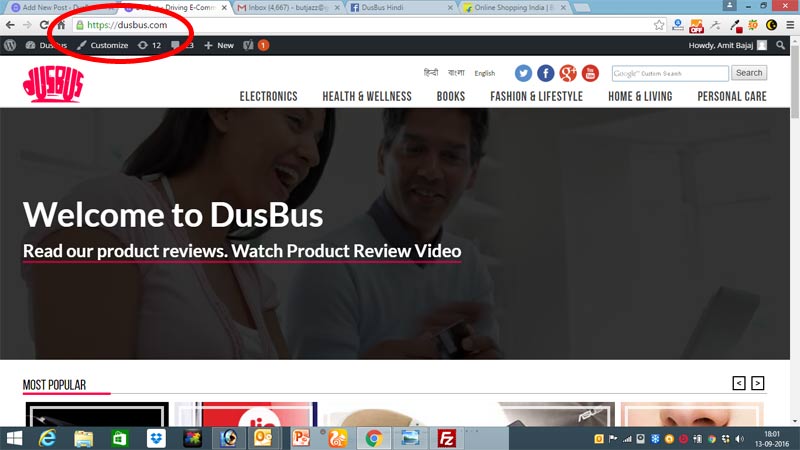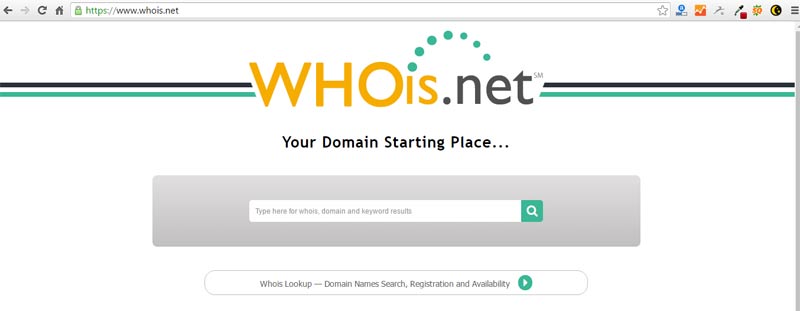The world wide web is not always a very nice place – if you are not too careful, you may be in for a nasty surprise or two. With the growth of e-commerce, a number of scamsters have created fake shopping sites which look very similar to genuine ones.
So, how does one identify the fraud sites from the real ones?
Here are some tips that you can follow to keep yourself safe while shopping online. Keep in mind that a failure on any one point doesn’t mean that the site is fraudulent, but if a site fails on multiple check points, you have a case for worry.
1. Look for the secure site / lock symbol on your browser’s address bar.
Website owners have to spend a small but extra amount to purchase the ‘secure’ certificate for their sites. Chances are high that a fraud shopping site won’t have bothered about this extra layer of security.
The addresses of genuine shopping sites will start with “https://” and not “http://”. Note the extra ‘s’. Open Amazon on your browser, and you will see that the site resolves to https://amazon.in. On this site too, you can see the https:// and the lock symbol, because we care for your security and your privacy.
Never give out your credit card or banking details on a site that doesn’t have a proper security certificate.

2. Look up Whois
On a website look up site like whois.net, you can find basic details about site ownership. Check for these specs:
- Site Creation Date: The older the site, the safer it is likely to be.
- Site Expiry Date: Reputed, established shopping sites will have renewed their domain for multiple number of years in advance. But if it is a fly-by-night operator, they won’t bother spending money for the next year when they won’t be around. So an expiry date within the next 1 year is a possible warning sign.

3. Do a Google Search
Do a few searches using their site address (examplescamsite.com), just their brand name without the dot com extentsion (examplescamsite). You can also try adding words like ‘fraud’ or ‘scam’ before their names and do a thorough search.
- If it is a quality shopping site which has been around for a while, it should find a mention on the internet on other sites as well. A mention on a popular news portal like Times of India or NDTV is a good indicator of the authenticity of the site.
- Search for site reviews, or check good review sites. At DusBus.com, we go the extra yard to ensure that any site that we recommend for any product purchase is safe and secure. So a mention of a shopping site on DusBus or other top review sites is a very good indicator that it is not a fake shopping site.
- If it is a fraud site, you may run into some information mentioned by another user who has unearthed the scam and posted something on Facebook or Twitter.
4. Check their Facebook Page and Twitter Handles
Any good shopping portal will have a decent Facebook Page with thousands of fans. But more than the number of likes or followers on the page, look for signs of engagements.
- Large number of FB likes and Twitter followers is a positive sign.
- But fake FB likes and Twitter followers can be purchased for a small sum.
- Look for number of comments on their posts and also quality of comments. Are users sharing their posts?
5. Check About Us and Contact Us Pages on their website
- One of the surest signs of a scamster site is a missing contact us page or a contact us page with no address and just a contact form.
- Does the About Us page have information about real people? Or is it just general information? Bona fide sites will typically mention name of owners, top management and other key people in their organisation.
6. Check Google Safe Browse Report
There are some poorly maintained sites which may not be scams, but have been hacked and are now home to tons of malicious software. Browsing through such sites can be dangerous – they might be ‘phishing’.
Click here to check the Google Safe Browsing Status Report. Google will tell you if the site is infested with any malware.
7. Check Privacy Policy and Terms & Conditions
Any reputed e-commerce site will definitely have a page that mentions their Privacy Policy and another page where they enumerate their Terms and Conditions including Return Policy.
While the presence of these pages does not guarantee that it is a safe site, their absence definitely raises a flag.
8. Does the deal being offered sound unbelievable?
Last week, I was looking to purchase a watch. A few google searches later, I landed on a site with jaw dropping rates on Rolex, Omega and other high end watch brands.

I was being offered a watch that was retailing for $ 3000 on Amazon for under $1000 here. Tempting indeed!
But if an offer sounds too unbelievable to be true, chances are that it is. I followed some of the steps enumerated above to spot if it is a fake site or a genuine one. It took me less than 5 minutes to find out the truth. A little less careful and I could have easily lost the 877$ – the ridiculously low price at which the masterpiece was being offered!
9. Bank Transfer should be a NO NO
If the website doesn’t have an online payment facility, don’t pay. While you have some chance of recovering the money paid through your card, if you have wire transferred the payment, you might as well forget about it.
Agree to a wire transfer only if you personally know the seller.
10. Check for basic Quality Parameters
These fraud sites are typically fly by night operations, and therefore it is unlikely that the owners would be keen to invest a lot of effort or money into creating a high quality website experience for their customers.
- Are the sentences poorly constructed? Are there too many grammatical errors?
- What is the quality of the images?
- What is the overall look and feel of the website?
This list sounds longer than it really is. It will take you no more than a few minutes to do a good check – and save yourself from being tricked out of your money.

Leave a Reply